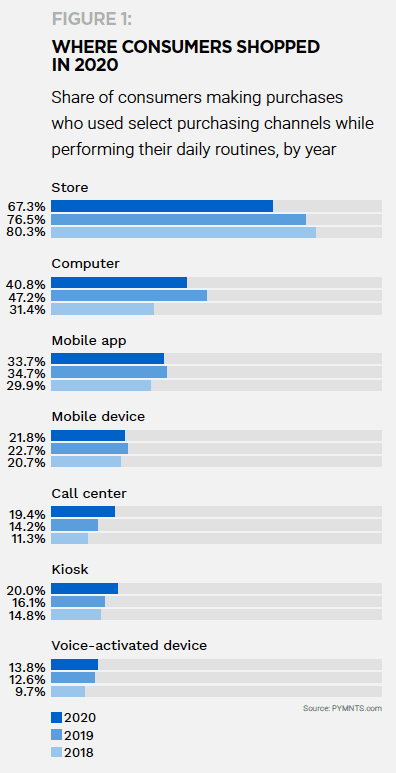Deep Dive: How Self-Service Retail Has Advanced And Helped Consumers Amid The Pandemic

The unattended retail space has come a long way from the holy water-dispensing vending machine of 215 B.C. to bitcoin kiosks, the fastest-growing market in the United States.
Self-service checkouts have a shorter history, with the first “service robot” created decades ago. Vending stations, kiosks and self-service machines are all part of the unattended retail industry, which can be broadly defined as sales that take place without human interaction on the retail side, according to Paul Stadler, former senior vice president at USA Technologies, who spoke with PYMNTS in 2020. Along the way, operators have leveraged the technology to dispense everything from sweaters to automobiles to worms.
The possibilities for unattended retail continue to expand in today’s era of social distancing and pandemic-driven demand for contactless options as businesses accelerate their digital transformations. Research projects the contactless payment market to grow to more than $100 billion by 2026, up from its current market value of an estimated $40 billion.
It is easy to understand why unattended retail has become so popular in commerce and with customers as it provides improved efficiencies, cost savings, speed and convenience. Kiosks and self-checkout solutions help minimize human interactions and are therefore considered safer during the pandemic, although questions of how sanitary public touchscreens are have come into play.
In this month’s Deep Dive, PYMNTS examines how self-service retail has grown more advanced in recent years and how these unattended technologies are helping consumers conduct business during the global health crisis.
The Unattended Retail Safety Question
Consumers’ expectations for faster, easier and frictionless shopping experiences and payments are higher than ever as they seek out more control as well as instant gratification — a phenomenon influenced by Amazon’s delivery speeds. Merchants like leveraging self-service technology because it helps reduce errors, save labor costs, serve more customers and increase profitability.
National Automatic Merchandising Association CEO Carla Balakgie said self-service, when touchless, is “considered safe” because vending machines offer pre-packaged products that can sometimes be accessed through mobile apps or ordering features. This has accelerated the adoption of such machines as merchants work to provide solutions that comfort consumers.
Some concerns center on how well these services can truly reduce risk, however. Consider that any self-checkout trip means interacting with a kiosk or self-service machine and touching the same surface that hundreds of other customers have touched if staff members are not consistent with sanitization. The Centers for Disease Control and Prevention (CDC) reported that the risk of exposure to the COVID-19 virus in this manner is low, but it is not zero.
A report found that more consumers would use self-checkout if they considered it more sanitary. Stores recognizing that dilemma introduced UV-powered antibacterial or antimicrobial technology to help reduce nearly 100 percent of germs on these high-touch surfaces. This fear of contagion is still the most common reason consumers give for turning to online shopping, according to a PYMNTS report.
A wide variety of options exist for purchasing without fear of touching screens, however. Voice-enabled systems as well as cameras for facial recognition offer an alternative, and they are already being used in airports and healthcare. They could easily lend themselves to a retail setting. Amazon’s “Just Walk Out” technology at its Go stores also offers a way to shop unattended with as little contact as possible, using weight sensors, overhead cameras and deep learning technology to detect when items have been removed from shelves and are automatically added to a virtual cart on customers’ smartphones. Methods such as these not only make shopping experiences more hygienic but also keep foot traffic moving and decrease time spent waiting in kiosk lines.
Continued Uptake
The global unattended retail market is predicted to grow to a value of $46 billion by 2027 at a compound annual growth rate (CAGR) of nearly 7 percent between 2020 and 2027. Consumer demand for self-service is driving businesses in a variety of industries to invest in unattended machines and automated devices, especially considering the saturation of mobile devices, connected systems and digital platforms. Smartphones are more often being used as a tool for delivering safer in-store shopping experiences. PYMNTS research shows that consumers have more consistently used mobile apps, voice-enabled devices and kiosks to make purchases within the last several years.
Consumers were already using unattended retail more and paying through their mobile phones, and the pandemic has only accelerated that migration. These consumer trends and advancements in technology, powered both by health concerns and an increasing desire for efficiency and seamlessness, are sure to continue into 2021 and beyond.

